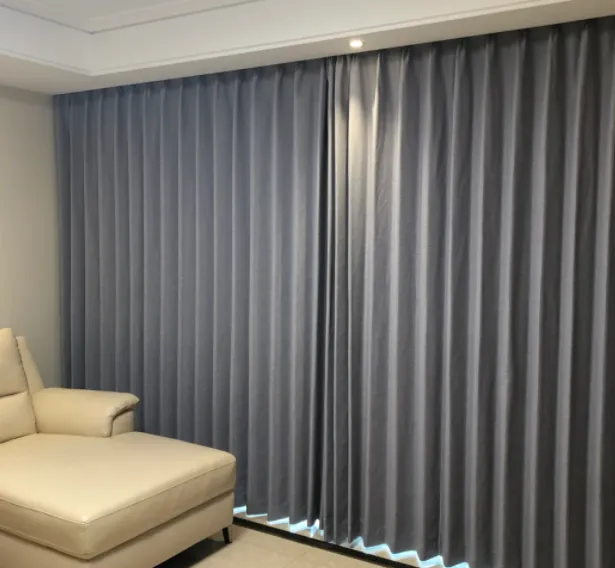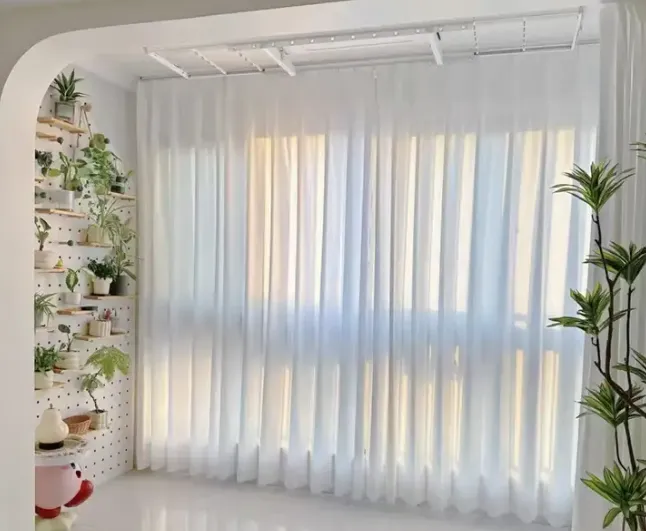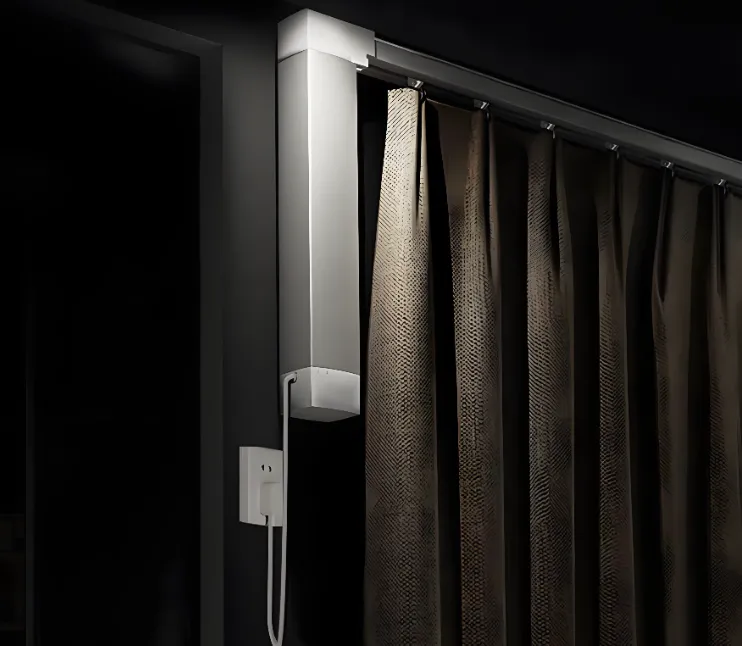Curtain Track Selection Guide: Choose the Right Support for Your Curtains
Curtain tracks are the unsung heroes behind well-functioning, visually cohesive window treatments. Often overlooked in favor of fabrics or styles, the right track not only ensures smooth opening and closing of curtains but also complements your decor, supports the weight of your chosen fabric, and adapts to your living space’s layout. Whether you’re outfitting a living room, bedroom, or dining area, selecting a curtain track requires balancing functionality, durability, and aesthetic harmony. This guide breaks down the key factors to consider, helping you find a track that meets your practical needs and enhances your curtains’ performance.
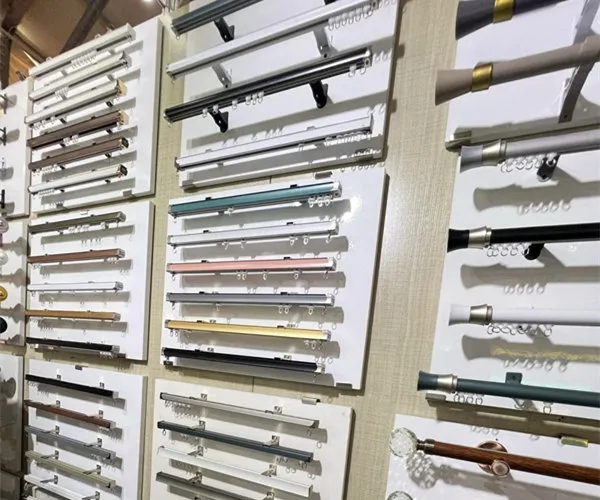
1. Understand the Main Types of Curtain Tracks
1.1 Ceiling-Mounted Tracks
- Maximizing height: By eliminating the gap between the top of the curtain and the ceiling, they create a seamless, floor-to-ceiling look that makes rooms feel taller—perfect for living rooms with standard or low ceilings.
- Heavy curtains: Ceiling mounting distributes the weight of thick fabrics (like velvet, blackout, or thermal-lined curtains) more evenly than wall-mounted tracks, reducing strain on walls.
- Wide windows or sliding glass doors: Long ceiling tracks can span large openings without sagging, ensuring smooth movement for curtain panels.
- Modern or minimalist decor: Slim, discreet ceiling tracks blend into ceiling lines, keeping the focus on the curtain fabric rather than hardware.
1.2 Wall-Mounted Tracks
- Standard window setups: They work well for most residential windows, especially when ceiling mounting isn’t feasible (e.g., drop ceilings, popcorn ceilings, or rooms with crown molding that you want to preserve).
- Light to medium-weight curtains: Ideal for sheers, linen blends, or cotton curtains. For heavier fabrics, opt for reinforced wall brackets spaced 12–18 inches apart to prevent sagging.
- Flexible positioning: You can install wall tracks 4–6 inches above the window frame (to mimic the height-boosting effect of ceiling tracks) and extend them 6–12 inches beyond the window width on both sides—this allows curtains to be fully pulled back, maximizing natural light.
1.3 Corded vs. Cordless Tracks
- Corded Tracks: Feature a pull cord that controls curtain movement, making them ideal for:
- Tall windows or high ceilings: No need to reach up to adjust curtains manually.
- Heavy or wide curtain panels: The cord distributes force evenly, making it easier to open/close thick fabrics.
- Accessibility needs: Suitable for individuals with limited mobility who struggle with manual curtain adjustment.
- Cordless Tracks: Rely on manual pushing/pulling or a spring-loaded mechanism, offering:
- Safety: No loose cords, making them the best choice for nurseries, kids’ rooms, or playrooms.
- Clean aesthetics: Without cords, they have a sleek, uncluttered look that complements modern or minimalist decor.
- Low maintenance: Fewer parts mean less chance of wear or breakage (e.g., cord fraying, pulley malfunctions).
1.4 Bendable/Flexible Tracks
- Bay windows or bow windows: They follow the curved or angled lines of bay windows, ensuring curtains cover the entire opening without gaps.
- Arched windows: Flexible tracks can be bent into semi-circles to match the top curve of arched windows, creating a custom look without the cost of custom-cut rigid tracks.
- Odd-shaped spaces: Useful for windows with unique layouts (e.g., corner windows, nooks) where straight tracks won’t fit.
Note: Bendable tracks have weight limits—most support only light to medium-weight curtains (e.g., sheers, lightweight linen). Avoid using them for heavy blackout or velvet curtains, as they may lose their shape over time.
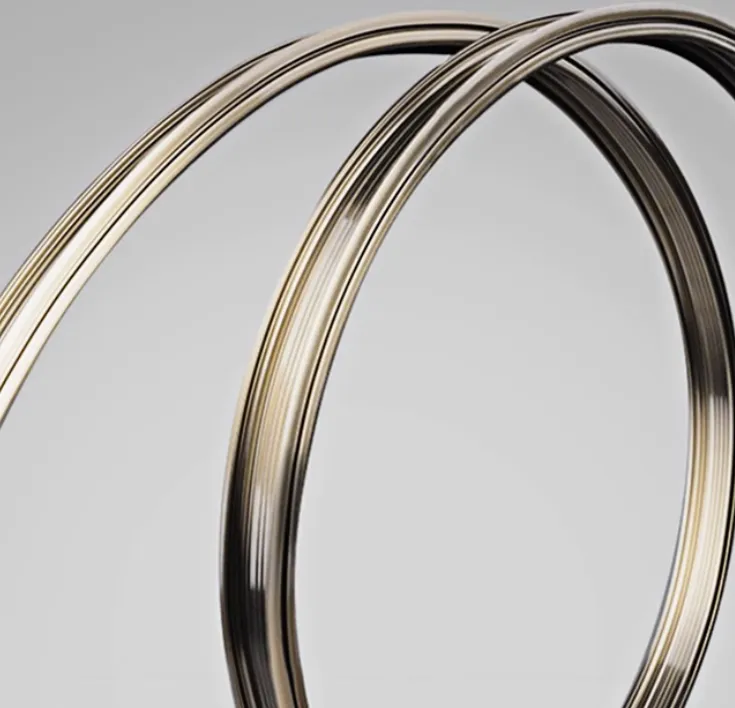
curtain track material
2. Choose the Right Track Material
2.1 Aluminum Tracks
- Strength & Weight Capacity: Lightweight yet sturdy, aluminum tracks can support medium-weight curtains (up to 15–20 pounds per panel) and some heavy fabrics (with reinforced brackets).
- Durability: Resistant to rust, corrosion, and warping, making them suitable for humid spaces like kitchens, bathrooms, or sunrooms.
- Aesthetics: Available in matte black, white, silver, or brushed nickel finishes—easy to match with most hardware (e.g., curtain rods, tiebacks) and decor styles.
- Smooth Operation: Many aluminum tracks feature built-in gliders or rollers that ensure quiet, friction-free curtain movement.
2.2 Plastic Tracks
- Affordability: The least expensive track material, perfect for temporary setups (e.g., rental apartments) or low-traffic spaces (e.g., guest rooms).
- Light Weight: Easy to install without heavy tools—most can be cut to size with a utility knife.
- Limitations: Not suitable for heavy curtains (they may crack or bend under weight). They also tend to fade or become brittle over time when exposed to direct sunlight.
- Best For: Sheers, cafe curtains, or lightweight cotton panels in low-use areas.
2.3 Wooden Tracks
- Aesthetics: Crafted from solid wood (e.g., pine, oak) or wood veneer, they complement natural fabrics like linen, cotton, or wool. Finishes range from stained (to highlight wood grain) to painted (white, cream, or dark brown).
- Weight Capacity: Solid wood tracks can support medium to heavy curtains (up to 25 pounds per panel) when paired with sturdy brackets.
- Considerations: Wood is susceptible to moisture damage—avoid using wooden tracks in bathrooms, kitchens, or damp basements. They also require regular dusting to prevent dust buildup on the track’s surface.
2.4 Stainless Steel Tracks
- Durability: Highly resistant to rust, corrosion, and scratches, making them ideal for coastal homes (where salt air damages other materials) or commercial spaces (e.g., hotels, offices) with high traffic.
- Strength: Can support very heavy curtains (up to 30+ pounds per panel), including thick blackout curtains or layered window treatments.
- Aesthetics: Sleek, modern finish (usually brushed or polished) that pairs well with contemporary decor and metallic hardware (e.g., chrome, brass curtain rings).
Cost: More expensive than aluminum or plastic, but their longevity justifies the investment for long-term use.
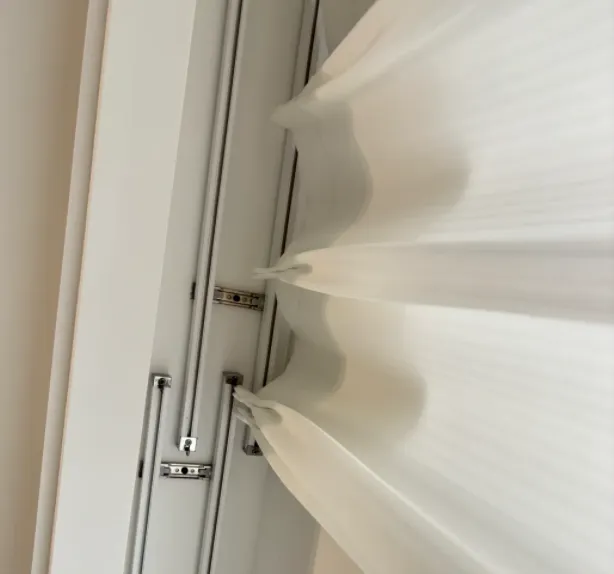
3. Match the Track to Your Curtain Type & Weight
3.1 By Curtain Weight
- Lightweight Curtains (Sheers, Cafe Curtains, Light Linen):
- Tracks: Plastic, thin aluminum, or basic wall-mounted tracks.
- Brackets: Standard, spaced 18–24 inches apart.
- Example: A plastic bendable track works well for sheer curtains on a bay window.
- Medium-Weight Curtains (Cotton Blends, Polyester Curtains, Light Thermal Curtains):
- Tracks: Aluminum (standard or reinforced), wooden tracks.
- Brackets: Reinforced wall or ceiling brackets spaced 12–18 inches apart.
- Example: An aluminum ceiling track supports medium-weight linen-blend curtains in a living room.
- Heavyweight Curtains (Blackout Curtains, Velvet, Thick Wool, Layered Curtains):
- Tracks: Reinforced aluminum, stainless steel, or solid wood tracks.
- Brackets: Heavy-duty brackets spaced 8–12 inches apart, with additional support at track joints or corners.
- Example: A stainless steel corded track is ideal for heavy blackout curtains in a home theater.
3.2 By Curtain Header Style
- Grommet/Eyelet Curtains: Work with most tracks, but opt for tracks with smooth gliders—grommets slide easily over straight or slightly curved tracks. Avoid bendable plastic tracks, as they may catch on grommet edges.
- Pinch Pleat Curtains: Require tracks with sliding hooks or carriers (small devices that attach to the pleats and move along the track). Look for tracks labeled “pleat-compatible” to ensure a secure fit.
- Rod Pocket Curtains: Best paired with simple wall or ceiling tracks—choose tracks with a narrow profile, as rod pockets slide over the track itself (no need for rings or hooks).
Tab Top Curtains: Compatible with most cordless tracks. Ensure the track’s width matches the tab opening (too wide, and tabs won’t slide; too narrow, and curtains may bunch).

Installation Considerations
4. Key Installation Considerations
4.1 Measure First, Cut Later
- Track Length: Measure the window width and add 12–24 inches (6–12 inches on each side) to allow curtains to overlap the window fully when closed—this blocks light gaps and improves privacy. For ceiling-mounted tracks, ensure the length matches the span of the ceiling joists (for support).
- Cutting: Most aluminum, plastic, and wooden tracks can be cut to size with a hacksaw (for metal/wood) or utility knife (for plastic). Use a straightedge to mark the cut line for a clean finish.
4.2 Support & Bracket Spacing
- Solid Support: For wall-mounted tracks, locate wall studs using a stud finder—attach brackets directly to studs whenever possible. If studs aren’t aligned, use drywall anchors (rated for the track’s weight) to reinforce the installation.
- Bracket Spacing:
- Lightweight curtains: 18–24 inches between brackets.
- Medium-weight curtains: 12–18 inches between brackets.
- Heavyweight curtains: 8–12 inches between brackets, plus an extra bracket at each end of the track.
4.3 Level Installation
4.4 Professional vs. DIY Installation
- DIY-Friendly Tracks: Plastic, lightweight aluminum, or short wall-mounted tracks are easy to install with basic tools (drill, screwdriver, level).
- Professional Installation: For heavyweight stainless steel tracks, ceiling-mounted tracks on concrete ceilings, or complex bendable tracks for bay windows, hire a professional. They have the tools (e.g., concrete drills) and expertise to ensure safe, secure installation.
5. Maintenance Tips to Extend Track Life
5.1 Regular Cleaning
- Dust Removal: Use a dry microfiber cloth or a vacuum attachment (with a soft brush) to wipe down tracks weekly—dust buildup can cause gliders to stick.
- Deep Cleaning: Every 3–6 months, remove curtains and clean tracks with a damp cloth and mild soap (avoid harsh chemicals, which can damage plastic or wooden tracks). For metal tracks, dry thoroughly to prevent rust.
5.2 Lubrication (For Moving Parts)
- Corded Tracks: Apply a small amount of silicone lubricant (not oil-based lubricants, which attract dust) to the pulley wheels and cord guides annually to ensure smooth cord movement.
- Gliders/Rollers: For tracks with removable gliders, wipe them with a lubricated cloth to reduce friction. Avoid over-lubricating—excess lubricant can stain curtain fabrics.
5.3 Inspect for Wear
- Check Brackets: Tighten loose screws every 6 months to prevent the track from shifting or sagging.
- Cord Maintenance: For corded tracks, replace frayed or damaged cords immediately—worn cords can break unexpectedly, causing curtains to fall.
- Glider Replacement: If gliders become cracked or stuck, replace them with compatible replacements (most hardware stores sell universal gliders for standard tracks).
Final Thoughts
